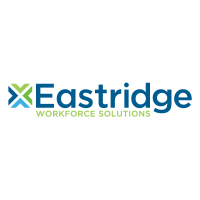Title Page
-
Client / Site
-
Date:
-
Branch #:
-
Assessed By:
-
Name of Company/Address:
-
Client Representative/Title:
-
Staffing Representative:
-
Number of Temporary Staff at Location:
-
Number of Regular Staff at Location:
-
Shift(s) and Hours:
-
Essential Duties and Responsibilities:
-
EXMOD
-
W/C CODES
-
RATE
-
OSHA VIOLATIONS
1. Accident/Injury Management Information
-
Do you have a COVID-19 Prevention Program
-
Injury and Illness Prevention Program in place?
-
OSHA log maintained?
-
Client notified to report recordable injuries on OSHA 300 log?
-
Modified duty available to contingent workforce per physician’s guidelines?
-
Client is aware of Eastridge injury Protocol?
-
Comments:
2. Training – Check all that Apply
-
Safety orientation?
-
Provided by:
-
Job-specific training?
-
Recordkeeping maintained on safety orientation and job-specific trainings?
-
Safety committee meets regularly?
-
Frequency:
-
Do you have a Workplace Violence Prevent Plan
-
Do you provide WVPP training for Temp Staff
-
System for identifying and evaluating hazards?
-
Comments:
3. Personal Protective Equipment
-
List types required (e.g., goggles, gloves, hardhat, earplugs, face shields, etc.):
-
Providedby:
-
Hearing conservation program implemented?
-
Written respiratory protection program implemented?
-
PPE is Latex-free?
-
Comments:
4. Walking/Working Surfaces
-
Documented, functioning housekeeping program in place?
-
Exits, aisles, passageways and walkways free of obstruction and marked appropriately?
-
Proper and safe storage of materials?
-
Fall safety protection program in place? (i.e., safety harness.)
-
Non-work areas are free of slip, trip and fall hazards?
-
Comments:
5. Fire Protection
-
Fire extinguishing equipment, hoses, and sprinklers regularly inspected?
-
Exit routes free and unobstructed?
-
Annual fire drill performed?
-
Evacuation and emergency plans posted?
-
Comments:
6. Machinery and Safe Guarding
-
Contingent employees using machines on site to perform their duties?
-
Safeguards prevent employees’ body parts from making contact with moving parts?
-
Inspections and regular service performed on machines?
-
Machines have a red emergency shut-off button within reach of operator?
-
Comments:
7. Tools and Equipment
-
Proper use (power tools, hand tools, ladders)
-
Tools are in good working condition?
-
Industrial knives have safety features (auto-retractable, hook-style, etc.)?
-
Comments:
8. Ergonomics
-
Measures taken to safeguard workers against ergonomic hazards?
-
Job requires repetitive motion?
-
Choose one.
-
Tasks are:
- Gripping
- Grasping
- Overhead
- Lifting
- Fine Movement
-
Body part affected: (hands, wrists, elbows, knees, back, etc.) Bending, stooping, twisting motions, pushing, pulling, reaching motions.
-
Other factors: vibration, temperature, sound, etc.
-
Are workstations adjustable?
-
Stretch and Flex program in place?
-
Comments:
9. Lock-out/Tag-out
-
Contingent employees perform Lock-out/Tag-out?
-
Machinery or equipment capable of movement required to be de-energized or disengaged and locked out during cleaning, servicing, adjusting or setting up operations, whenever required?
-
Sufficient number of accident prevention signs or tags and safety padlocks provided for any reasonable and foreseeable repair emergency?
-
Comments:
10. Contact Agents - Health Hazards - Locked Chemicals
-
Chemicals labeled and stored properly?
-
SDS (Safety Data Sheets) accessible and properly maintained?
-
Airborne contaminants? (i.e., dust, fumes, vapors.)
-
Are controls and/or PPE in place to eliminate employee exposure to hazardous chemicals?
-
Will employees be exposed to allergens (Nuts, wheat, fish, etc.)?
-
Comments:
11. Electrical
-
Does the power supply to machinery appear to be in good working condition?
-
Any power cords damaged, deteriorated or suffering from strain relief?
-
Power cords or extension cords create a potential trip, slip, or fall hazard for employees?
-
All Electrical panels have a clear area of 36 inches by 36 inches?
-
Electrical outlets, junction boxes and other electrical components properly covered?
-
Comments:
12. Material Handling
-
Contingent workers using Powered Industrial Equipment?
-
Contingent employee certified at client’s site?
-
Powered Industrial Trucks inspected on a daily basis?
-
Conveyors guarded, including belts, gears, sprockets, chains and screws?
-
Conveyor emergency cable stop accessible to employees?
-
Any hoists onsite using cables, ropes, chains, or vacuum systems?
-
Inspections and regular service performed on hoisting equipment?
-
Eyewash station within 10 seconds of forklift charging area and serviced regularly?
-
Propane tanks stored in an approved cage 20 feet from emergency exits and ignition sources?
-
Pallet stacks are no more than 6 feet high and separated by 8 feet?
-
Wheels are chocked/blocked prior to entering truck/trailer?
-
Types(s) of Powered Industrial Truck(s) onsite:
-
Comments:
13. Confined Spaces
-
Any work areas which are considered Confined Space?
-
Contingent employees enter or work around Confined Spaces?
-
Provide all necessary equipment (testing, ventilation, PPE, etc.)
-
Emergency action and rescue plan?
-
Comments:
-
Client/Prospect approved for staffing?
-
Photos available?
-
Follow up Tour Required?
-
Corrective Measures Suggested:
-
EH&S Manager/Branch Representative:
-
Is client's signature required?
-
Client Signature
-
The OSHA guidelines for the contingent workforce impose certain responsibilities for Eastridge Workforce Solutions and its clients in order to ensure a safe and healthy work environment. We look forward to working together in compliance with these guidelines.
Please return the reviewed and signed document with photographs (if applicable) to: allsafety@eastridge.com






